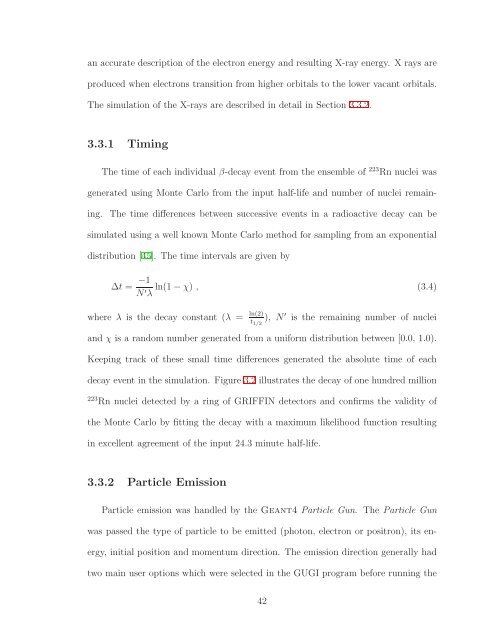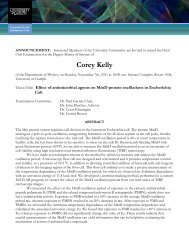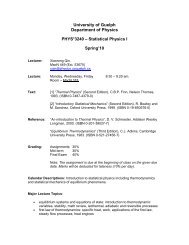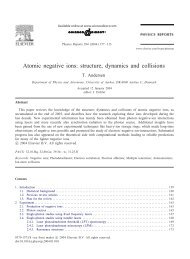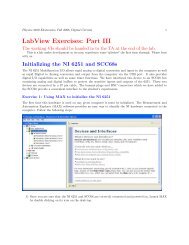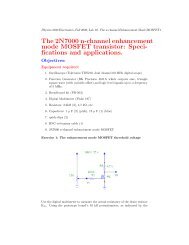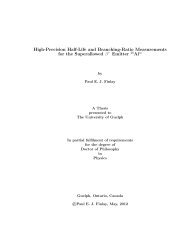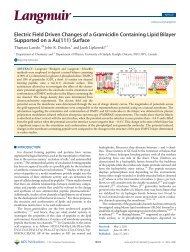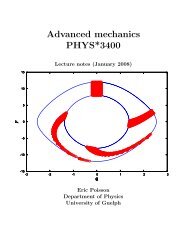Geant4 Simulations for the Radon Electric Dipole Moment Search at
Geant4 Simulations for the Radon Electric Dipole Moment Search at
Geant4 Simulations for the Radon Electric Dipole Moment Search at
Create successful ePaper yourself
Turn your PDF publications into a flip-book with our unique Google optimized e-Paper software.
an accur<strong>at</strong>e description of <strong>the</strong> electron energy and resulting X-ray energy. X rays are<br />
produced when electrons transition from higher orbitals to <strong>the</strong> lower vacant orbitals.<br />
The simul<strong>at</strong>ion of <strong>the</strong> X-rays are described in detail in Section 3.3.2.<br />
3.3.1 Timing<br />
The time of each individual β-decay event from <strong>the</strong> ensemble of 223 Rn nuclei was<br />
gener<strong>at</strong>ed using Monte Carlo from <strong>the</strong> input half-life and number of nuclei remaining.<br />
The time differences between successive events in a radioactive decay can be<br />
simul<strong>at</strong>ed using a well known Monte Carlo method <strong>for</strong> sampling from an exponential<br />
distribution [45]. The time intervals are given by<br />
∆t = −1 ln(1−χ) , (3.4)<br />
N ′ λ<br />
where λ is <strong>the</strong> decay constant (λ = ln(2)<br />
t 1/2<br />
), N ′ is <strong>the</strong> remaining number of nuclei<br />
and χ is a random number gener<strong>at</strong>ed from a uni<strong>for</strong>m distribution between [0.0, 1.0).<br />
Keeping track of <strong>the</strong>se small time differences gener<strong>at</strong>ed <strong>the</strong> absolute time of each<br />
decay event in <strong>the</strong> simul<strong>at</strong>ion. Figure 3.2 illustr<strong>at</strong>es <strong>the</strong> decay of one hundred million<br />
223 Rn nuclei detected by a ring of GRIFFIN detectors and confirms <strong>the</strong> validity of<br />
<strong>the</strong> Monte Carlo by fitting <strong>the</strong> decay with a maximum likelihood function resulting<br />
in excellent agreement of <strong>the</strong> input 24.3 minute half-life.<br />
3.3.2 Particle Emission<br />
Particle emission was handled by <strong>the</strong> <strong>Geant4</strong> Particle Gun. The Particle Gun<br />
was passed <strong>the</strong> type of particle to be emitted (photon, electron or positron), its energy,<br />
initial position and momentum direction. The emission direction generally had<br />
two main user options which were selected in <strong>the</strong> GUGI program be<strong>for</strong>e running <strong>the</strong><br />
42


